Related Research Articles

France began colonizing the Americas in the 16th century and continued into the following centuries as it established a colonial empire in the Western Hemisphere. France established colonies in much of eastern North America, on several Caribbean islands, and in South America. Most colonies were developed to export products such as fish, rice, sugar, and furs.

This section of the timeline of New France history concerns the events between Jacques Cartier's first voyage and the foundation of the Quebec settlement by Samuel de Champlain.

Events from the 1600s in Canada.
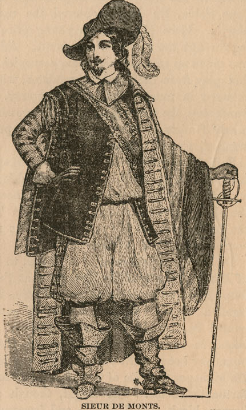
Pierre Dugua de Mons was a French merchant, explorer and colonizer. A Calvinist, he was born in the Château de Mons, in Royan, Saintonge and founded the first permanent French settlement in Canada. He was Lieutenant General of New France from 1603 to 1610. He travelled to northeastern North America for the first time in 1599 with Pierre de Chauvin de Tonnetuit.

A multitude of languages have always been spoken in Canada. Prior to Confederation, the territories that would become Canada were home to over 70 distinct languages across 12 or so language families. Today, a majority of those indigenous languages are still spoken; however, most are endangered and only about 0.6% of the Canadian population report an indigenous language as their mother tongue. Since the establishment of the Canadian state, English and French have been the co-official languages and are, by far, the most-spoken languages in the country.

Port-Royal National Historic Site is a National Historic Site located on the north bank of the Annapolis Basin in Granville Ferry, Nova Scotia, Canada. The site is the location of the Habitation at Port-Royal, which was the centre of activity for the New France colony of Port Royal in Acadia from 1605 to 1613, when it was destroyed by English forces from the Colony of Virginia.
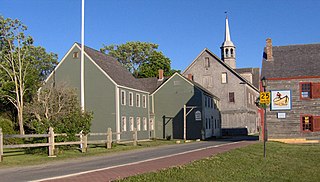
Shelburne is a town located in southwestern Nova Scotia, Canada.

Annapolis Royal is a town in and the county seat of Annapolis County, Nova Scotia, Canada. The community, known as Port Royal before 1710, is recognised as having one of the longest histories in North America, preceding the settlements at Plymouth, Jamestown and Quebec. For nearly 150 years, it served as the capital of Acadia and subsequently Nova Scotia until the establishment of Halifax in 1749.

The Acadians are the descendants of 17th and 18th century French settlers in parts of Acadia in the northeastern region of North America comprising what is now the Canadian Maritime Provinces of New Brunswick, Nova Scotia and Prince Edward Island, the Gaspé peninsula in eastern Québec, and the Kennebec River in southern Maine.

The history of Nova Scotia covers a period from thousands of years ago to the present day. Prior to European colonization, the lands encompassing present-day Nova Scotia were inhabited by the Mi'kmaq people. During the first 150 years of European settlement, the region was claimed by France and a colony formed, primarily made up of Catholic Acadians and Mi'kmaq. This time period involved six wars in which the Mi'kmaq along with the French and some Acadians resisted British control of the region: the French and Indian Wars, Father Rale's War and Father Le Loutre's War. During Father Le Loutre's War, the capital was moved from Annapolis Royal, Nova Scotia, to the newly established Halifax, Nova Scotia (1749). The warfare ended with the Burying the Hatchet ceremony (1761). After the colonial wars, New England Planters and Foreign Protestants immigrated to Nova Scotia. After the American Revolution, Loyalists immigrated to the colony. During the nineteenth century, Nova Scotia became self-governing in 1848 and joined the Canadian Confederation in 1867.
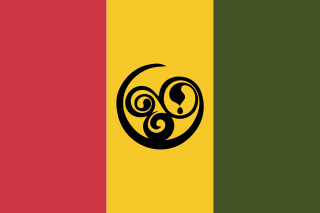
Black Nova Scotians are Black Canadians whose ancestors primarily date back to the Colonial United States as slaves or freemen, later arriving in Nova Scotia, Canada, during the 18th and early 19th centuries. As of the 2021 Census of Canada, 28,220 Black people live in Nova Scotia, most in Halifax. Since the 1950s, numerous Black Nova Scotians have migrated to Toronto for its larger range of opportunities. The first recorded free African person in Nova Scotia, Mathieu da Costa, a Mikmaq interpreter, was recorded among the founders of Port Royal in 1604. West Africans escaped slavery by coming to Nova Scotia in early British and French Colonies in the 17th and 18th centuries. Many came as enslaved people, primarily from the French West Indies to Nova Scotia during the founding of Louisbourg. The second major migration of people to Nova Scotia happened following the American Revolution, when the British evacuated thousands of slaves who had fled to their lines during the war. They were given freedom by the Crown if they joined British lines, and some 3,000 African Americans were resettled in Nova Scotia after the war, where they were known as Black Loyalists. There was also the forced migration of the Jamaican Maroons in 1796, although the British supported the desire of a third of the Loyalists and nearly all of the Maroons to establish Freetown in Sierra Leone four years later, where they formed the Sierra Leone Creole ethnic identity.

The Book of Negroes is a document created by Brigadier General Samuel Birch, under the direction of Sir Guy Carleton, that records names and descriptions of 3,000 Black Loyalists, enslaved Africans who escaped to the British lines during the American Revolution and were evacuated to points in Nova Scotia as free people of colour.
Pierre Biard was a Jesuit missionary who was given orders by Father Pierre Coton, Jesuit provincial in Paris, to take charge of a mission at Port-Royal in Acadia, along with Father Énemond Massé.
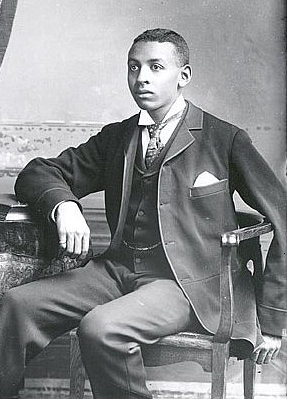
James Robinson Johnston was a Canadian lawyer and community leader.
Sylvia D. Hamilton is a Canadian filmmaker, writer, poet, and artist. Based in Grand Pre, Nova Scotia, her work explores the lives and experiences of people of African descent. Her special focus is on African Nova Scotians, and especially women. In particular, her work takes the form of documentary films, writing, public presentations, teaching, mentoring, extensive volunteer work and community involvement. She has uncovered stories of struggles and contributions of African Canadians and introduced them to mainstream audiences. Through her work, she exposes the roots and the presence of systemic racism in Canada. She aims to provide opportunities for Black and Indigenous youth through education and empowerment.

Nova Scotia is a Canadian province located in Canada's Maritimes. The region was initially occupied by Mi'kmaq. The colonial history of Nova Scotia includes the present-day Maritime Provinces and the northern part of Maine, all of which were at one time part of Nova Scotia. In 1763, Cape Breton Island and St. John's Island became part of Nova Scotia. In 1769, St. John's Island became a separate colony. Nova Scotia included present-day New Brunswick until that province was established in 1784. During the first 150 years of European settlement, the colony was primarily made up of Catholic Acadians, Maliseet, and Mi'kmaq. During the last 75 years of this time period, there were six colonial wars that took place in Nova Scotia. After agreeing to several peace treaties, the long period of warfare ended with the Halifax Treaties (1761) and two years later, when the British defeated the French in North America (1763). During those wars, the Acadians, Mi'kmaq and Maliseet from the region fought to protect the border of Acadia from New England. They fought the war on two fronts: the southern border of Acadia, which New France defined as the Kennebec River in southern Maine, and in Nova Scotia, which involved preventing New Englanders from taking the capital of Acadia, Port Royal and establishing themselves at Canso.
Black Canadians, numbering 198,610, make up 11.3% of Montreal's population, as of 2021, and are the largest visible minority group in the city. The majority of Black Canadians are of Caribbean and of continental African origin, though the population also includes African American immigrants and their descendants
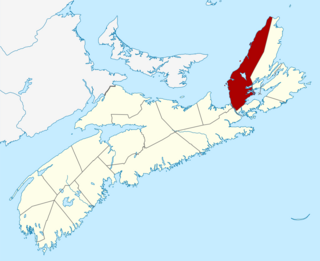
The Municipality of the County of Inverness is a county municipality on Cape Breton Island, Nova Scotia, Canada. It provides local government to about 17,000 residents of the historical county of the same name, except for the incorporated town of Port Hawkesbury and the Whycocomagh 2 Miꞌkmaq reserve, both of which are enclaves. Public services are provided in the areas of recreation, tourism, administration, finance, and public works.
References
- 1 2 Johnston, A. J. B. (2012). Mathieu_Da_Costa_and_Early_Canada,_by_A._J._B._Johnston "Mathieu Da Costa and Early Canada: Possibilities and Probabilities*". Northern Blue Publishing. Retrieved 3 March 2012.
{{cite web}}: Check|url=value (help) - ↑ Johnston, A.J.B. (2001). "Mathieu Da Costa along the Coasts of Nova Scotia? Some Possibilities". Journal of the Royal Nova Scotia Historical Society. 4.
- ↑ William J. Switala (2006). Underground Railroad in New Jersey And New York (July 2006 ed.). Stackpole Books; annotated edition. p. 182. ISBN 0-8117-3258-4.
pg 139 - "The first black person mentioned in Canada was Mathieu de Costa, who appeared in French records from 1608 as being a "negro servant" to the government of Port Royal." - ↑ "Mathieu Da Costa", Black History Canada
- 1 2 "Who was Mathieu Da Costa?". Government of Canada. 2009. Archived from the original on 4 February 2009. Retrieved 23 May 2009.
- 1 2 "Mathieu Da Costa | The Canadian Encyclopedia". www.thecanadianencyclopedia.ca. Retrieved 2020-05-09.
- ↑ Black History - Mathieu Da Costa: Permanent Domestic Stamps, Canada Post shop, 2017
- ↑ Mathieu da Costa African Heritage Trail Archived 2009-11-20 at the Wayback Machine
- ↑ Ronald Rudin, Remembering and Forgetting in Acadie: A Historian's Journey through Public Memory (Toronto: University of Toronto Press, 2009), pp. 135-137.
- ↑ "The Mathieu Da Costa Challenge". Government of Canada. 2009. Archived from the original on 4 February 2009. Retrieved 23 May 2009.
Other readings
- "Mathieu Da Costa along the Coasts of Nova Scotia: Some Possibilities" by John Johnston; NSHS, Journal #4 (2001); pp. 13.
- "Estéban Gomez et Mathieu Dacosta: Marins noirs sur l'atlantique (XVIe et XVIIe siecles)" Par Arsene Francoeur Nganga, Préface du Professeur John. K. Thornton, Edilivre, Saint denis (France), Décembre 2017. ISBN 9782414167166